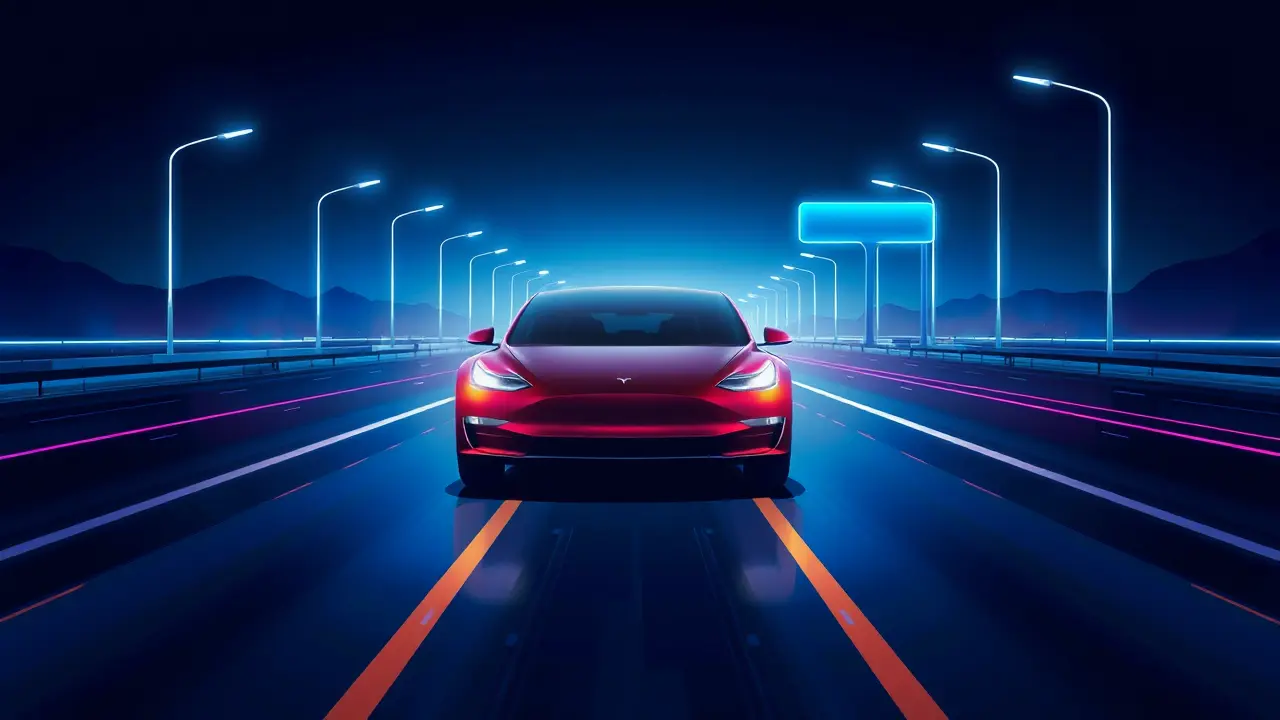US Investigates Tesla Self-Driving Cars for Wrong-Way Driving.
The National Highway Traffic Safety Administration has launched a preliminary evaluation into Tesla’s Autopilot system, a move that sends ripples far beyond the automotive sector and into the corridors of regulatory power and market confidence. This investigation, triggered by a spate of incidents where vehicles operating on Autopilot were reported to have traveled the wrong way on divided highways, places approximately 2.9 million Tesla vehicles under a microscope of unprecedented scrutiny. For a risk analyst, this isn't merely a recall watch; it's a multi-vector scenario unfolding in real-time, where technological fallibility intersects with regulatory response and public trust.The core of the issue lies in the fundamental promise of Tesla’s Full Self-Driving (FSD) suite—a system marketed as capable of navigating complex urban and highway environments, yet now facing allegations of a catastrophic failure mode: failing to recognize one-way traffic signs or improperly navigating highway entry and exit ramps. Such a failure isn't a minor software glitch; it's a direct pathway to high-speed, head-on collisions, a scenario with the highest fatality risk on modern roadways.To understand the potential fallout, one must consider the precedent set by previous NHTSA investigations into Tesla, which have escalated from specific component failures like brake lights to broader, systemic probes into the very logic of its driver-assistance AI. The current probe represents a significant escalation, moving from how the system fails to alert a driver to whether the system's core decision-making process is fundamentally flawed.This immediately presents several plausible scenarios. Scenario A: The investigation concludes that the wrong-way driving events are rare edge cases, perhaps linked to specific, poorly marked road geometries or unusual weather conditions.Tesla issues a targeted over-the-air (OTA) software update, the NHTSA closes its investigation, and market confidence rebounds, albeit with a lingering question mark over the system's absolute limits. Scenario B, with a higher perceived risk probability: The NHTSA’s analysis reveals a deeper, more systemic issue with the vision-based system's object permanence or its ability to correctly interpret complex traffic control devices.This could lead to a mandatory recall, forcing a fundamental rewrite of core FSD algorithms, a process that would be costly, time-consuming, and immensely damaging to Tesla’s technological brand identity. The financial implications here are staggering; a forced recall of 2.9 million vehicles for a software patch is one thing, but a finding of a fundamental design defect could open the floodgates to liability lawsuits that would dwarf the company's current legal challenges. Furthermore, we must factor in the regulatory domino effect.A stringent ruling from the NHTSA would undoubtedly embolden regulators in Europe and Asia, who have already been more cautious in their approval of Tesla’s autonomous features. This could effectively stall Tesla’s global expansion of its FSD capabilities, ceding ground to competitors like GM’s Super Cruise or Ford’s BlueCruise, which have taken a more geofenced and conservative approach.From a market risk perspective, Tesla’s valuation is heavily predicated on its lead in AI and autonomy. A conclusive finding that this lead is built on an unstable foundation could trigger a significant re-rating of the stock, as investors recalibrate their expectations for future profitability derived from robotaxis and software subscriptions.The investigation also throws a harsh spotlight on the regulatory framework itself. The NHTSA is operating with powers largely designed for a era of mechanical failures, not algorithmic ones.Its ability to effectively audit and certify complex AI systems is still nascent, creating a regulatory lag that companies like Tesla have arguably exploited. This probe could be the catalyst for a new wave of automotive regulation, akin to the establishment of the Federal Aviation Administration after a series of aviation disasters, but for autonomous vehicle software.Will we see the creation of a mandatory pre-certification process for autonomous driving systems, complete with standardized testing on closed courses and in simulation? The outcome of this Tesla investigation will set a powerful precedent. Finally, the court of public opinion represents a critical, volatile risk factor.Each new headline about a wrong-way Tesla erodes the carefully cultivated image of Tesla as the vanguard of a safer, automated future. The narrative could quickly shift from 'innovator' to 'irresponsible experimenter,' a perception that is incredibly difficult to reverse.In the highest-risk scenario, a single, high-profile fatal crash conclusively linked to this wrong-way driving flaw while Autopilot was engaged could create a crisis of existential proportions for the company, triggering not just regulatory action and financial loss, but a complete collapse of consumer confidence in the technology itself. The NHTSA’s investigation is therefore not just about 2. 9 million cars; it is a stress test for the entire emerging ecosystem of automated driving, a probe into the limits of current AI, and a critical juncture that will determine the risk-reward calculus for self-driving technology for years to come.
It’s quiet here...Start the conversation by leaving the first comment.
© 2025 Outpoll Service LTD. All rights reserved.
